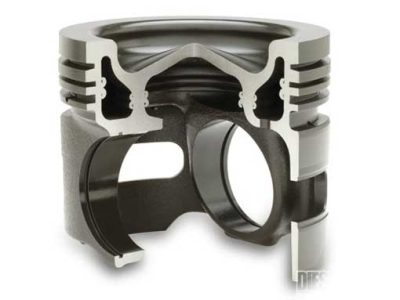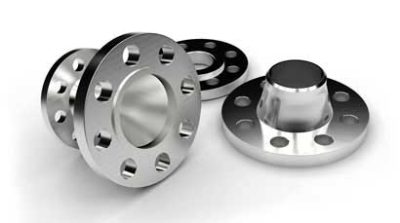produktkategori
Produkttaggar
CNC-verktygsmaskiner vid bearbetning av flygplansdelar
Vid bearbetning på en CNC-maskin, manuell verktygskontroll krävs inte, och graden av automatisering är hög. Fördelarna är uppenbara.
⑴ Minskade tekniska krav för operatörer:
En senior arbetare med vanliga verktygsmaskiner kan inte odlas på kort tid. dock, utbildningstiden för en CNC-anställd som inte behöver programmering är mycket kort (till exempel, en CNC-svarvare behöver bara en vecka, och han kommer att skriva enkla bearbetningsprogram). Dessutom, delarna som bearbetas av CNC-arbetare på CNC-verktygsmaskiner har högre precision än de som bearbetas av vanliga arbetare på traditionella verktygsmaskiner, och det tar kortare tid.
De huvudsakliga bearbetningsobjekten för CNC-verktygsmaskiner är flygplansdelar med komplexa profiler, som löser den nyckelutrustning som är svår att lösa med vanliga bearbetningsmetoder. Den största egenskapen med CNC-bearbetning är användningen av stansad tejp (eller tejp) att styra verktygsmaskinen för automatisk bearbetning. Eftersom flygplan, raketer och motordelar har olika egenskaper: Flygplan och raketer har stora komponenter, stor storlek och komplexa former; Motor noll, liten komponentstorlek och hög precision. Därför, CNC-verktygsmaskinerna som valts ut av flygplans- och rakettillverkningsavdelningarna och motortillverkningsavdelningarna är olika. Storskaliga CNC-fräsmaskiner med kontinuerlig styrning används främst inom flygplans- och rakettillverkning. I motortillverkning, både kontinuerligt styrda CNC-verktygsmaskiner och punktstyrda CNC-verktygsmaskiner (såsom CNC-borrmaskiner, CNC-borrmaskiner, bearbetningscentra, etc.) används.
Processkoncentration
CNC-verktygsmaskiner har i allmänhet verktygshållare och verktygsmagasin som automatiskt kan byta verktyg. Verktygsbytesprocessen styrs automatiskt av programmet, så processen är relativt koncentrerad. Processkoncentration ger enorma ekonomiska fördelar:
⑴ Minska golvytan på verktygsmaskinen och rädda verkstaden.
⑵ Minska eller eliminera mellanlänkar (som mellanliggande besiktning av halvfabrikat, tillfällig lagring och hantering, etc.), vilket sparar tid och arbete.
automatisering
Vid bearbetning på en CNC-maskin, manuell verktygskontroll krävs inte, och graden av automatisering är hög. Fördelarna är uppenbara.
⑴ Minskade tekniska krav för operatörer:
En senior arbetare med vanliga verktygsmaskiner kan inte odlas på kort tid. dock, utbildningstiden för en CNC-anställd som inte behöver programmering är mycket kort (till exempel, en CNC-svarvare behöver bara en vecka, och han kommer att skriva enkla bearbetningsprogram). Dessutom, delarna som bearbetas av CNC-arbetare på CNC-verktygsmaskiner har högre precision än de som bearbetas av vanliga arbetare på traditionella verktygsmaskiner, och det tar kortare tid.
⑵ Minska arbetarnas arbetsintensitet: I bearbetningsprocessen, för det mesta är CNC-arbetare uteslutna från bearbetningsprocessen, vilket är väldigt arbetsbesparande.
⑶ Stabil kvalitet på bearbetade delar:
Bearbetningsautomatiseringen av CNC-verktygsmaskiner eliminerar trötthet och slarv hos arbetare på vanliga verktygsmaskiner och förbättrar produkternas konsistens.
⑷ Hög bearbetningseffektivitet:
Det automatiska verktygsbytet av CNC-verktygsmaskiner gör bearbetningsprocessen kompakt och förbättrar arbetsproduktiviteten.
Hög flexibilitet hos bearbetade delar
Även om den traditionella verktygsmaskinen är flexibel, dess effektivitet är låg; Även om traditionella specialplan är mycket effektiva, de har dålig anpassningsförmåga till delar, hög styvhet, och dålig flexibilitet, vilket gör det svårt att anpassa sig till frekventa produktändringar till följd av hård konkurrens i marknadsekonomin. Så länge programmet ändras, nya delar kan bearbetas på CNC-maskinen, och det kan automatiseras, med god flexibilitet och hög effektivitet. Därför, CNC-maskinen kan anpassa sig till konkurrensen på marknaden.
Stark förmåga att bearbeta delar
Verktygsmaskinen kan noggrant bearbeta olika konturer, och vissa konturer kan inte bearbetas på vanliga verktygsmaskiner. CNC-verktygsmaskiner är särskilt lämpliga för följande tillfällen:
1. Delar som inte får skrotas.
2. Utveckling av nya produkter.
3. Bearbetning av akut nödvändiga delar.
Bearbetningsprinciper för precisionsdelar
⑴ Bearbetningen av föregående process kan inte påverka positioneringen och fastspänningen av nästa process.
⑵ Insidan först, sedan utanför, det är, den inre håligheten (inre hålet) bearbetas först, och sedan bearbetas formen.
⑶ Bearbetningsprocedurer med samma installation eller användning av samma verktyg bör utföras kontinuerligt för att minska fel orsakade av ompositionering eller verktygsbyte.
⑷ I samma installation, den process som har liten effekt på arbetsstyckets styvhet bör utföras först.
Bearbetningsväg för precisionsdelar
Matningsbearbetningsvägen för CNC-svarvar hänvisar till den väg som svarvverktyget rör sig från verktygsinställningspunkten (eller verktygsmaskinens fasta ursprung) tills den återgår till denna punkt och avslutar bearbetningsprogrammet. Inklusive skärbanor och icke-skärande tomgångsbanor som att skära in och skära ut verktyget. Matningsbanan för finbearbetning utförs i princip längs detaljens kontursekvens. Därför, Fokus för att bestämma matningsvägen är att bestämma matningsvägen för grovbearbetning och tomgångsslag. I CNC-svarvbearbetning, bestämningen av bearbetningsvägen följer i allmänhet följande principer.
① Det bearbetade arbetsstyckets noggrannhet och ytjämnhet bör garanteras.
② Gör bearbetningsvägen den kortaste, minska restiden på tomgång, och förbättra bearbetningseffektiviteten.
③ Försök att förenkla arbetsbelastningen för numerisk beräkning och förenkla bearbetningsproceduren.
④ För vissa återanvändbara program, subrutiner bör användas.
Att få bearbetningsprogrammet att ha den kortaste matningsvägen kan inte bara spara utförandetiden för hela bearbetningsprocessen, men också minska onödig verktygsförbrukning och slitage på de glidande delarna av verktygsmaskinens matningsmekanism. Typen och realiseringsmetoden för den kortaste matningsvägen är som följer.
⑴ Den kortaste skärmatningsvägen. Den kortaste skärmatningsvägen kan effektivt förbättra produktionseffektiviteten och minska verktygsförlusten. När du ordnar den kortaste matningsvägen, det är också nödvändigt att säkerställa arbetsstyckets styvhet och kraven på bearbetningsteknik.
⑵ Den kortaste tomma NC-färdvägen.
① Använd utgångspunkten skickligt. Ett exempel på den allmänna situationen för grovsvarvning med rektangulär slingmetoden. Inställningen av verktygsinställningspunkt A är att ta hänsyn till behovet av bekvämt verktygsbyte under finsvarvning och annan bearbetning, så den är inställd i en position långt bort från ämnet, och på samma gång, startpunkten och verktygsinställningspunkten överlappas
② Ställ in verktygsbytespunkten på ett genialiskt sätt. För att överväga bekvämligheten och säkerheten med verktygsbyte, ibland är verktygsbytespunkten också inställd på en position långt bort från ämnet. Sedan, när det andra verktyget byts, tomgångsbanan vid finsväng måste vara längre; Om verktygsbytespunkten för det andra verktyget också är inställd på moderpunktspositionen i mitten, tomgångssträckan kan förkortas.

precisions-cnc-bearbetning av flygplansdelar

Process för bearbetning av aluminiummotorhålrum

cnc-fräsning av molybden flygplansdelar

Bearbetningsteknik för Ships Automatic Miniature Titanium Parts
③ Rimligen ordna "återgå till noll" rutt. För att förenkla beräkningsprocessen och underlätta verifieringen vid manuell sammanställning av bearbetningsprogrammet för den komplexa konturen, programmeraren ställer ibland in slutpunkten för verktyget efter varje skärning. Genom att utföra "återgå till noll" driftinstruktion, alla återgår till positionen för verktygsinställningspunkten, och kör sedan det efterföljande programmet. Detta kommer att öka avståndet till matningsvägen och minska produktionseffektiviteten. Därför, när man rationellt ordnar "återgå till noll" rutt, avståndet mellan slutet av föregående snitt och början av nästa snitt ska vara så kort som möjligt. Eller noll för att uppfylla kravet på den kortaste matningsvägen. Dessutom, när du väljer kommandot för att återgå till verktygsinställningspunkten, under förutsättningen att ingen störning, använd x- och z-axelns dubbelriktade "nollretur"-kommando så mycket som möjligt. Funktionen "återgå till noll" vägen är den kortaste.
⑶ Stegmatningsväg för stort marginalämne. Listar två skärmatningsvägar för ämnen med för stor marginal. Det är en fel klippväg, skär i storleksordningen 1→5, och marginalen kvar för varje skärning är lika. Det är rätt stegmatningsväg. Eftersom under samma mängd kniv tillbaka.
⑷ Kontinuerlig skärmatningsväg för finbearbetning av detaljkontur. Efterbehandlingen av delens kontur kan ordnas med en eller flera efterbehandlingsprocesser. Den sista konturen avslutas med den sista kontinuerliga bearbetningen. Just nu, verktygets fram- och tillbakaläge bör väljas på lämpligt sätt, och försök att inte ordna skärning och skärning eller verktygsbyte och paus i en kontinuerlig kontur. För att inte förstöra balansen i processsystemet på grund av plötsliga förändringar i skärkraften. Orsakar repor, formändringar eller kvarhållna verktygsmärken på detaljens kontur.
⑸ Speciell matningsväg. Vid CNC-svarvning, allmänt. Verktygets längdmatning matas längs koordinatens negativa riktning, men ibland är det orimligt att lägga fodervägen i normal negativ riktning. Det kan till och med skada arbetsstycket.
CNC-bearbetning har följande fördelar:
① Antalet verktyg reduceras kraftigt, och komplexa verktyg krävs inte för att bearbeta delar med komplexa former. Om du vill ändra form och storlek på delen, du behöver bara modifiera delbearbetningsprogrammet, som lämpar sig för ny produktutveckling och modifiering.
② Bearbetningskvaliteten är stabil, bearbetningsnoggrannheten är hög, och upprepningsnoggrannheten är hög, som är lämplig för bearbetningskraven för flygplansdelar.
③ Högre produktionseffektivitet i fallet med flera sorter och produktion i små partier. Kan minska produktionsförberedelser, verktygsmaskinsjustering och processinspektionstid, och minska skärtiden på grund av användningen av den bästa skärmängden.
④ Den kan bearbeta komplexa ytor som är svåra att bearbeta med konventionella metoder, och även bearbeta några oobserverbara bearbetningsdelar. Nackdelen med CNC-bearbetning är att kostnaden för verktygsmaskiner är dyr och kräver en hög nivå av underhållspersonal.
Kontakta oss
Väntar på ditt mejl, vi kommer att svara dig inom 12 timmar med värdefull information du behövde.
 English
English العربية
العربية 中文(漢字)
中文(漢字) Čeština
Čeština Dansk
Dansk Nederlands
Nederlands Suomi
Suomi Français
Français Deutsch
Deutsch Italiano
Italiano 日本語
日本語 ಕನ್ನಡ
ಕನ್ನಡ 한국어
한국어 Português
Português Русский
Русский Slovenčina
Slovenčina Español
Español Svenska
Svenska Türkçe
Türkçe





